#sewing machines
Text

A Singer 28K sewing machine that according to the seller is 'a little rusty'. I doubt there's even one useful part left inside. For contrast here's what it's supposed to look like

264 notes
·
View notes
Text
I've been spoiled by years of using industrial sewing machines at work and school, and now sewing long seams on my domestic machine at home is frustrating because it's so slow it's SO SLOW.
It vibrates so much if I go faster and still won't go anywhere near as fast as an industrial.
250 notes
·
View notes
Note
I didn't know they had children's sewing machines back then too! That's so cute! Do you know what they would have cost at the time, compared to an adult-sized one?
Pretty much anything a mom would have/do around the house came in a miniature version for little girls - sewing machines, wash tubs/boards, little china cabinets full of dishes, tiny cast iron stoves, etc., etc.
As for cost - much less generally, but it's a little hard to compare as most children's machines were just the machine and were hand cranked, while adult machines usually came with a cabinet and many had switched over to electric power by that time.
Children's machines in the fall/winter 1923 Sears range from about $15 to $100 when adjusted for inflation.

Whereas a cabinet-less adult sewing machine would run you closer to $700 - however it was an electric machine, so again, hard to compare.

106 notes
·
View notes
Text
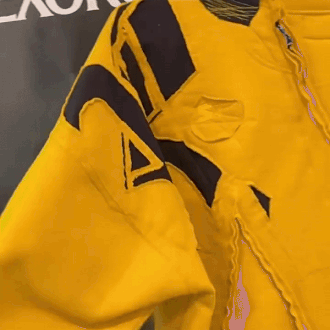


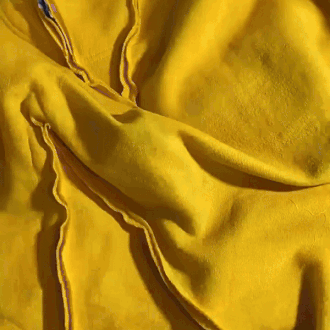
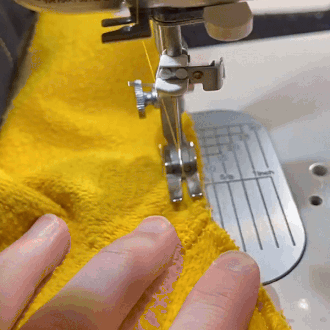

rittenonline on ig
#stim#diy fashion#clothes#sewing machines#sfw#yellow#black#white#silver#brown#dogs#fake animals#shirts#sweaters#diy clothes#punk#grunge#fabric#needles#hands#ishy gifs#postish
57 notes
·
View notes
Text
I feel like everyone should be taught basic tailoring at some point because it makes things look so much better
Sleeves just a little too long? Hem them instead of letting them stack and wrinkle and make you look like a kid playing dress-up
Pockets too shallow? Rip some out of an old pair of pants and use them as extensions
Shapeless dress but it has a nice color and good pockets? Take in that waist, trim what's not needed, and bam, nice dress
Tank top sticks out under the arms? Fold it in and sew it up—voila, a well-fitting tank top
Button starting to get loose? Grab some needle and thread and loop the thread through the holes a few times. That button isn't going anywhere.
You don't even need a machine. I do most of my alterations by hand (I find the machine most useful for bigger jobs that are better done quickly, while hand stuff is better for smaller and slower jobs).
It doesn't even have to be obvious! Several of my work polos are tailored (short sleeves brushed the insides of my elbows, which I didn't like, so I shortened them slightly) and no one said a word. It's difficult to tell that the extra fold is there—the sleeves were cuffed, so I folded it up and sewed it in place by hand. When I was working, I sometimes had to compare sleeves to see which ones I'd done.
You don't even need to cut anything if the alteration is small. I didn't cut anything but thread while altering my work polos. Taking in the tank top that stuck out under my arms was my first time tailoring, so I avoided cutting anything just in case I made a mistake.
Anyway learn basic tailoring if you can
664 notes
·
View notes
Photo
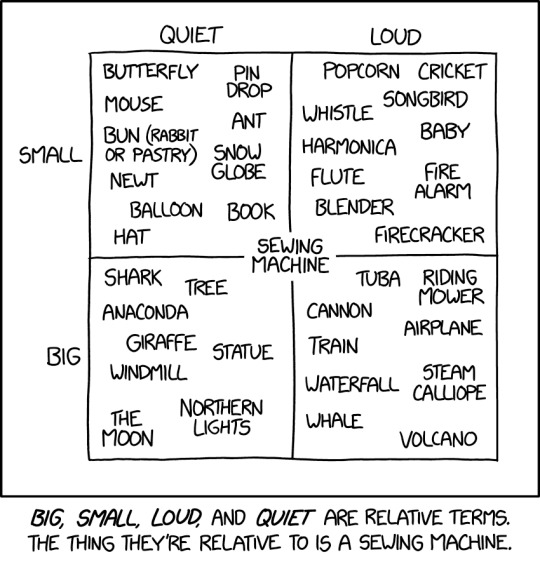
Small sewing machines are sewing machines that are smaller than a sewing machine. A sewing machine is larger than a small sewing machine, but quieter than a loud sewing machine.
Relative Terms [Explained]
285 notes
·
View notes
Text

And here is my 1950s Singer sewing machine. This is also an old photo, but she was missing her bobbin, although I think she had nearly everything else. Like the others in my collection, she is a hand crank sewing machine.
#sewing machine#vintage sewing machine#sewing machines#sewing#antique sewing machine#crafts#cottagecore#cottagecore aesthetic#crafting#artists on tumblr#sewists of tumblr#antique#vintage#singer#singer sewing machine#1950s#grandmacore
103 notes
·
View notes
Text


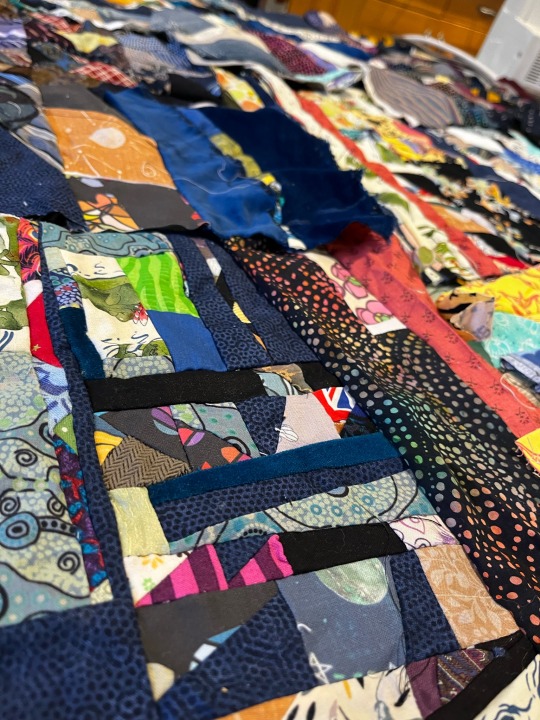
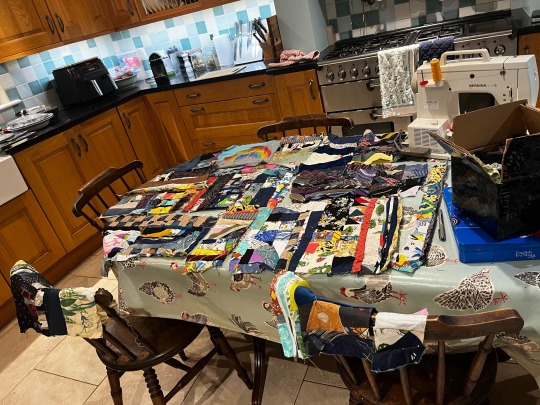
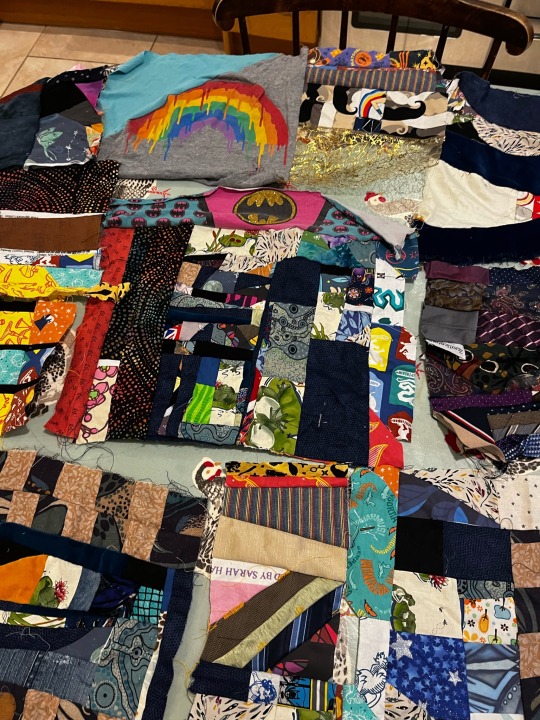
Taking a break from curtains to attach some more scraps together!
12 notes
·
View notes
Text
People with big treadle sewing machines, do you occasionally switch feet positioning on the pedal, or are you just... Resigned to developing differently specialised n unbalanced muscles on each leg?
#asked my mom she says she never thought of it#that she just goes with what shes used to and which leg is more strong for the task#i thought of it today while sewing and got myself so bamboozled by switching that i almost fucked up a whole belt#text post#sewing#sewing machines#thoughts
17 notes
·
View notes
Text
Okay, totally not shifty at all, but I have to share this find! I hooked up the belt and everything works! I absolutely cried over it.
Deseret Industries, Murray UT
684 notes
·
View notes
Text
oh! It's September 10th!
Happy 176th anniversary to Elias Howe's lock stitch sewing machine patent!
222 notes
·
View notes
Note
Hey Pink,
so I went to a flea market today and scored a old singer machine for 10€! Now I'd like to know when it was made and probably where but I'm completely lost, maybe you could shed a little light on it?
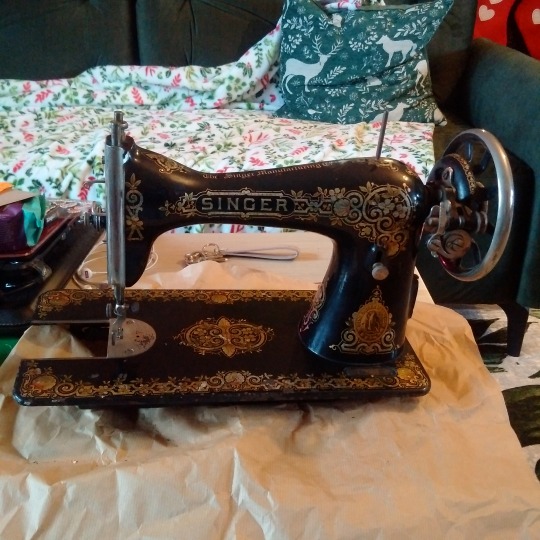

I cleaned the serial number plate as best I could. I suppose it reads: G67875 (2 or Z, I cannot tell)
Thank you so much!
It's a Model 15!
Here's some more information on the Model 15. Note that they're calling theirs the "15K", but the K just indicates that it was made in Scotland. Yours is likely a 15 and not a 15k, unless it says it was made in Great Brittan in the text along the top.
If you're ever unsure about the date on a Singer machine, I recommend this taxonomic key, and the Ismacs serial number database.
We can tell from the bobbin threading path on the front that this is a very early Model 15. According to the serial number, it's likely one of a lot of 50,000 made in January of 1910.
I believe the decal style on that is called Tiffany or Gingerbread. The first thing that I noticed about that is the absolutely exceptional state of those decals. Usually, machines of this age have a lot of the decal work worn off. If you want to clean them, be careful about damaging them.
The best advice I've found for cleaning and restoring old machines is from Doug at treadleon.net. Here's an excerpt from one of his articles:
Now let's talk about appearance. Some folks like to see an old machine shine like new. If the basic decoration, paint and decals, is good enough, that can be done. Most machines we find in sales aren't quite that good, or may actually be very bad. I like to let old machines show their age and usefulness. To clean a machine's surface, I use first a gentle mix of diluted dish soap and water, rubbing small areas at a time with a soft cloth. Often there is old dried oil or shellac on the surface. The earlier cleaning with kerosene may have loosened a lot of that up and it will rub off, too. Often it can be scraped off with a fingernail. Don't use hard scrapers, you'll scratch the enamel. Once I have the plain dirt off, I wipe with sewing machine oil several times over a period of days, then wipe off all the oil and wax. I use Turtle Wax. Other folks have had good luck with ArmorAll.
There are folks who favor various cleaning compounds, such as Simple Green, 409, Windex, etc. Great care must be exercised here. Many of the chemicals in these compounds, especially ammonia, will destroy the gold in the decals, leaving you with silver decals, or no decals. Since the decal content and manufacturing varied over the years and between manufacturers, the fact that a product did a great job on one machine does not mean it will not damage another. Always start by cleaning a small area in back of the pillar to see what is going to happen.
I've also found that liquid wrench spray penetrating oil can get through some really nasty dirt on the machines and it pretty decal-safe. It's become my main "clean now or else" tool for when dish soap is not doing the job fast enough.
One really cool fact about the Model 15 is that any time you're looking at sewing machine parts and you see the number 15, it's likely because it was a part first used in this machine. They use our standard needle, which is the needle family 15x1. If you go out and buy a standard sewing machine needle today, it will be a 15x1. When you go buy the standard bobbin for most Singer/Janome/Baby Lock/Brother/Bernette machines (plus some Pfaffs and Vikings), it's called the Class 15 bobbin. That's because the first machine to use these needles and these bobbins was the Singer Model 15. It's that influential.

The Model 15 sits flat on a table even without a bottom case, though you can buy some really nice bottom case reproductions on etsy or get a generic flatbed machine case from SewingPartsOnline if you do want a base for it. Note that if you use a generic case, you'll have to take the hand crank off when you store it with the lid on it. That said, I have my hand crank machine in a cheap generic flat bed case and it's always quite an enjoyment when someone opens it up and expects a mid-1990's machine and SURPRISE! It's an antique!!
Anyway, excellent find! The Model 15 was hugely influential. Pretty much any time that you find a modern sewing machine thing with the number 15 on it, it's because the item was first used on the Model 15. The needle family that all non-industrial sewing machines use today is the 15x1 needle family. That needle was first used on the Model 15. If you buy bobbins for almost any Janome/Brother/Baby Lock/Bernette and many Pfaffs and Vikings, it's called the Class 15 bobbin. That bobbin style was made for the Model 15 machine. I just think it's so cool that this machine became the standard so effectively that you can just go down to your local big box craft store and buy needles and bobbins for it!
PS if anyone wants a sewing-related rabbit hole to go down, Japanese Model 15 clones that are actually improvements on the Model 15 is a good one to check out. It was cloned long after Singer discontinued the Model 15.
96 notes
·
View notes
Text
Hey I don’t use a sewing machine at all usually so I’m having some issues. What am I doing wrong? These were some tests I did bc I suspected something was up and idk what I’m looking at. Is there a way to fix this to make it normal, and is there a stitch I can use to make it invisible from the outside? Idk if I’m making sense sorry


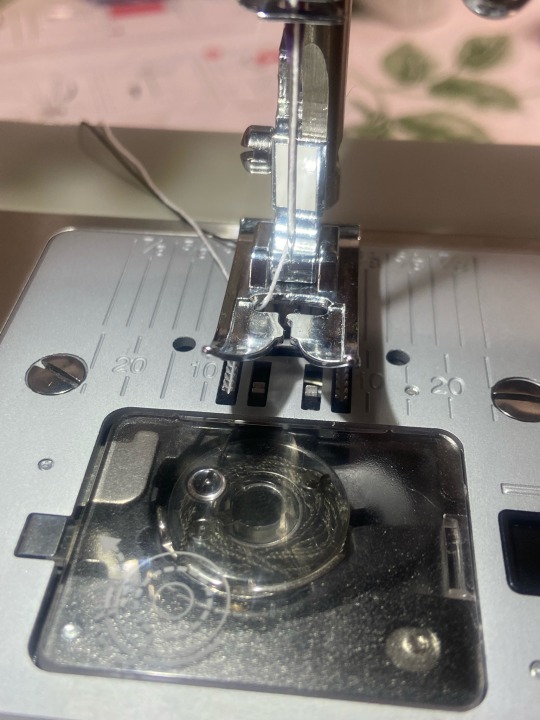
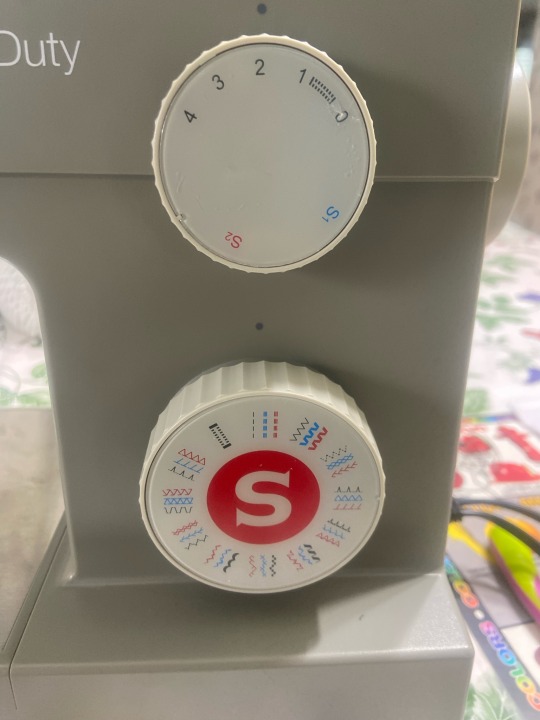
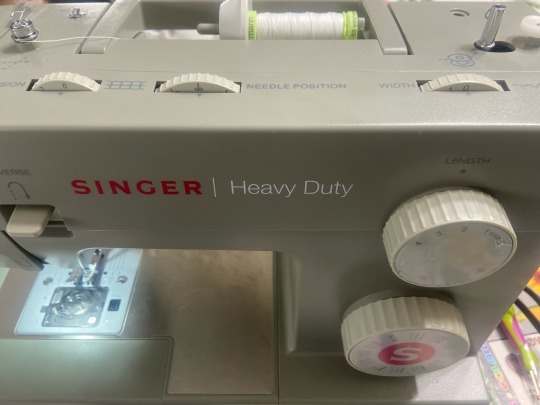
6 notes
·
View notes
Text
Singer

McCall's, Spring 1968
20 notes
·
View notes
Text
How to clean out your sewing machine!
Everyone knows maintaining equipment is important, so here's a quick guide on how to keep your sewing machine oiled and cleaned between projects!
youtube
#sewing machine#sewing machine maintenance#how to clean your machine#how to clean#sewing#sewing machines#Youtube
13 notes
·
View notes
Text
Random thing ive been learning about, ive been looking into vintage sewing machines (just got an elna supermatic im gonna try and get working!) and learned a cool thing about how they used to make different stitches before things were computerized: these discs called "cams"!

simply put, theyre like lil gears that move the needle around to make diff designs, similar to how computerized machines do just like, mechanically. there are both built in cams (usually in cam stacks) and drop in cams that you can switch out.

now, the problem is: cams can be hard to find apparently! theres only so many of course, and while they arent that expensive individually (a few bucks apiece from what im seeing), it seems like its a pain in the ass to track down specific ones (ive seen so many people bemoaning the ducky elna cam. everyone wants that duck!)
because theyre usually just bits of plastic, it wouldnt be THAT hard to just. 3d print em. maybe it wouldnt give the best results, but hey, a ducky thats gonna wear out a lil too fast might be better than not having a ducky at all, and if people had the files at least someone could theoretically produce them thru better means, like injection molding or whatever.
but of course making a 3d printing database of cams is easier said than done. not for lack of trying apparently! ive found stuff like this thread of someone trying to put together a project to make a database of elna cams (which was later abandoned going by the comments), i found at least one for the elna zigzag cam (nice, might need it if i get my machine working!) , and there are at least a few files available for more popular cams like on singers. heres a thread with someone sharing a buncha files, which i cant verify bc i dont have a printer but they have the duck! and also apparently the dick, which is nice.
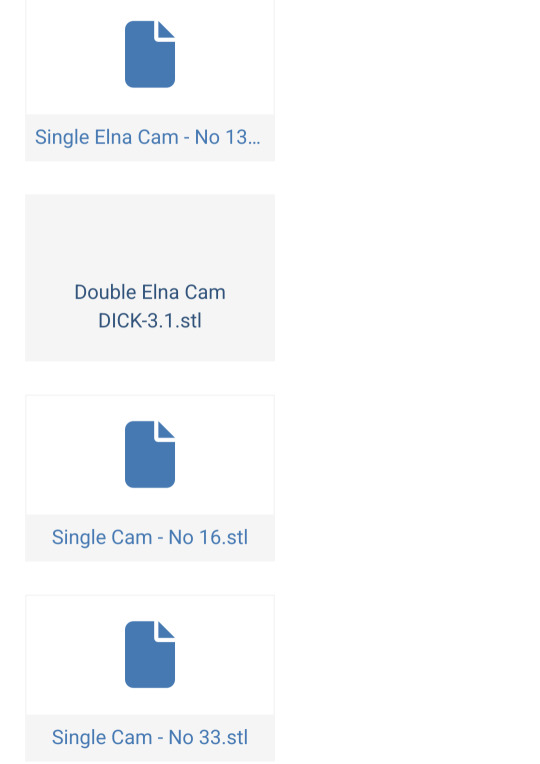
if you reverse engineer this shit you could design your own cams, like heres someone who made a 3-step zig zag cam, and a couple of projects for "design your own cams" which. sound cool but idk how modeling works so idk how to do this lmao. but thats so neat!
and theoretically it would be SO easy for someone to just make a database of every cam they could find and upload em for anyone to use but well. again, easier said than done. im finding a lotta scattered files, but unless im missing it i dont think anyones made a single nice lil page filled with the files for cams across diff machines.
...anyway, if anyone knows how this shit works I think it would b really cool if someone made a heartbeat cam and a lil bat cam. those would be fun!
9 notes
·
View notes